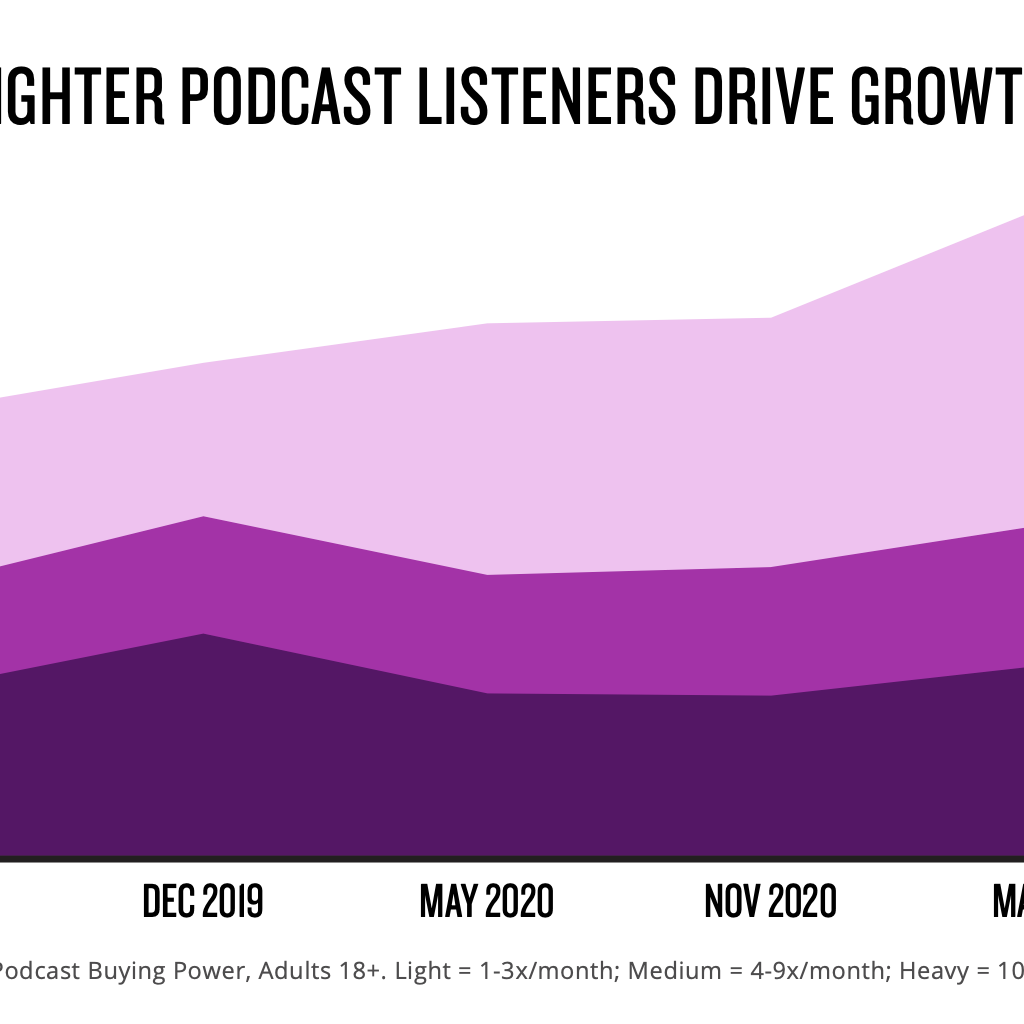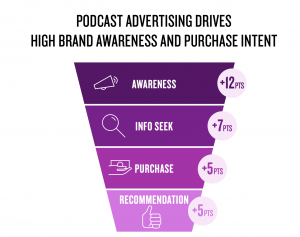A new report by Nielsen has found that the appeal of podcasting has broadened for both listeners and advertisers.
The Podcasting Today report, based on American data, concludes that “the maturing of the podcast landscape has broadened the appeal of podcasts well beyond those who have been listening for many years.”
“Today, the library of podcast titles is approaching 2 million, and it shows no sign of slowing down,” says the report, which confirms many of the trends that podcast creators have known for some time. The IAB believes U.S. podcast revenue will reach $2 billion by 2023—that’s a big jump from the $842 million generated last year.
“The rise in popularity has effectively changed the landscape of the entire market. Rampant celebrity involvement, high-profile platform mergers and podcast-inspired TV programming highlight just how much the podcast industry has developed in just a few years’ time,” says the report, which makes the point that podcast listening has moved from early adopters who listened to a few favourite podcasts, to lighter but more mainstream listening habits.
“In addition to having a broad effect on the overall media industry, the maturing of the podcast landscape has broadened the appeal of podcasts well beyond those who have been listening for many years. That’s a key shift, particularly as advertisers look to podcasting for whitespace opportunities. Today, almost half (49%) of U.S. podcast listeners are lighter, more casual users: people who listen anywhere from one to three times a month.”
 The report highlights two reasons for the growth towards the mainstream:
The report highlights two reasons for the growth towards the mainstream:
- Consumer interest in new, engaging content from across the media landscape continues to grow, and podcast content has proven to be an attractive option among the media diets of millions of Americans, especially during the global COVID-19 pandemic.
- The pandemic paused the growth of heavy podcast listeners. With revised lifestyles and schedules over the past year, this isn’t unexpected. Yet while the percentage of heavy listeners declined slightly last year, we’re now seeing it increase, rising from 25% earlier this year to just under 30% as of May. So we know there is a segment of the population that was very engaged with podcast content before the pandemic arrived, and that audience could continue increasing its engagement if the conditions (or content) are right.
The pandemic has not had a negative impact on overall podcast engagement. Listener growth did flatten during the second half of last year, but it has ramped up notably in 2021, largely due to an increase in at-home listening, says the report.
According to Nielsen Podcast Buying Power data, the percent of the adult U.S. population listening to podcasts has grown more than 40% in the past three years. As podcasts become a bigger part of our media culture, they’re attracting broader audiences. The growth in listeners is happening across all age segments as more consumers discover and start listening to podcasts.
The increasing appeal of podcasts to general audiences is exactly why brands and agencies need to be tracking engagement with them and leveraging the opportunities in their marketing strategies and campaigns, the report concludes:
“The growth of podcasting has brought a massive opportunity for advertisers to reach highly engaged, niche audiences,” says Arica McKinnon, Vice President, Client Consulting at Nielsen. “While the industry has made strides to capture metrics like downloads, brands have been challenged to understand the impact of ads. Today, those challenges are fading.”
Podcast advertising—particularly when read by the host—drives stronger brand recall punch than more traditional forms of advertisements. Nielsen’s Podcast Ad Effectiveness (PAE) solutions have found that host- read ads drive a brand recall rate of 71%, which subsequently creates high levels of
Longer ads (60 seconds+) drive even higher lifts among consumers. When it comes to seeking more information about a brand, longer ads are nearly 70% more effective in this category than shorter ones. The lift scores for purchase intent and recommendation intent are both 40% higher for longer ads than shorter ones. Not only do longer ads generate stronger engagement, they also drive brand recall: nearly three-quarters of listeners were able to recall the brand after hearing a longer ad. The financial services, technology and consumer packaged goods (CPG) industries are notable for high ad recall, probably as a result of the pandemic.

The report recommends that brands shouldn’t approach podcasts with the same advertising strategies that they use in traditional, mass-reach media. Given the wealth of data about podcast listeners, brands have the ability to engage with listeners who are the most receptive to learning about their products and services.
The report gives a case study example of an American financial investment brand that was grappling with creating a sense of trust, credibility and excitement with consumers amid a time of rapid change, uncertainty and technological advancement.
To address its challenge, the brand began advertising in podcasts. After being exposed to the brand’s ad, 79% of listeners were able to recall the financial services brand, which is notably higher than Nielsen benchmark norm of 65% for the financial services industry. Almost half of respondents described the advertising as “trusted” and “convenient.” The advertising also received high brand fit scores, which contributed to high agreement with brand attributes and high recall scores.

